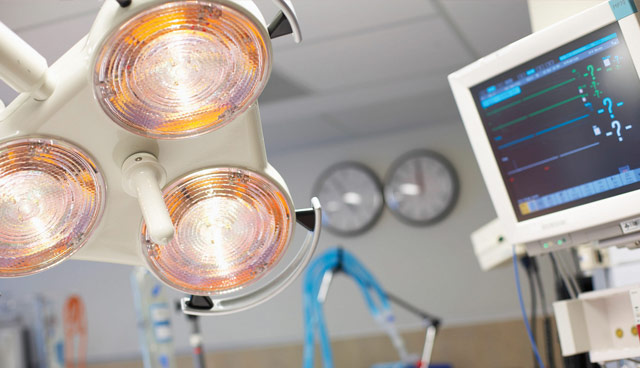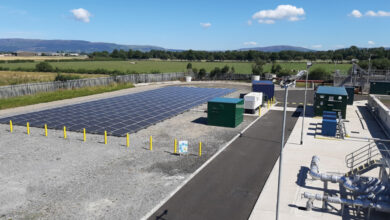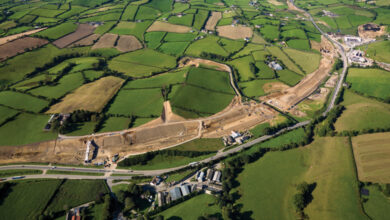Health infrastructure: the future challenges

Health infrastructure faces a number of headwinds including the prevailing demographic trends and subsequent pressures on planning, financing and delivery. James Barlow, professor of technology and innovation management (healthcare) at Imperial College Business School, addresses the recent Northern Ireland Infrastructure Investment Conference to outline the future challenges.
‘Healthcare’ is often interpreted as the delivery of services and drugs alongside technological innovation. The built environment is more obscure concept unless we actually visit a hospital or a primary care centre, contends Barlow. However, globally, as much is spent on physical, built infrastructure for healthcare as is spent on medical devices. This relative spend is reflected in Northern Ireland.
“When I’m talking about infrastructure in this context, I’m not talking about the big technical systems or e-health, I’m talking about physical, built infrastructure. Fundamentally, built infrastructure is a core component of the healthcare system – you can’t change one bit of it without producing a knock-on effect somewhere else,” clarifies Barlow.
At the same time, Northern Ireland is not immune from the pressures facing developed health systems. “There will be a significant increase in the over-65 cohort in the next 25 years or so, in addition to 45,000 more people aged over 85. Simultaneously, we have an obesity problem, with all the attendant healthcare implications of that. Some, 63 per cent of adults in Northern Ireland are either overweight or obese,” he explains.
As such, the challenge for healthcare systems is coping with the escalating demands of an ageing population and chronic disease, with constrained resources. “In the UK, we spend around 9 per cent of GDP on healthcare. It’s a political question when considering how much should be spent on healthcare, but we cannot go on spending ever-increasing amounts on healthcare provision without doing something about how we actually deliver care services,” asserts Barlow.
There are various estimates about the funding gap in the NHS. This is the gap between what will be spent in the event of nothing changing and what ought to be spent to maintain standards. “There are huge annual gaps, anything from £20 billion to £60 billion each year, depending on how you estimate it. It has been reported that we ought to be spending 4 per cent per annum more in real terms to cope with escalating demand.”
Innovation
What is required, therefore, is innovation. “We can’t carry on delivering healthcare in the way that we have been doing for the last 200 years,” contends the Imperial College professor. While the technology has evolved, the model of healthcare hasn’t changed for decades and the way in which we deliver services is essentially the same.
But innovation in healthcare cannot be reduced to simply being about technology. “When we think of innovation, we think of new drugs, new medical devices and health apps, but actually it’s all about organisational change and process transformation,” explains Barlow.
“There is more to gain from thinking about how we procure healthcare services, how we organise the processes for the delivering them, how we organise the relationships between the institutions which are involved in delivering healthcare services and, ultimately, getting people to change their behaviour, lead healthier lives and be more active.”
These layers of innovation will play out over different time scales and have implications for built healthcare infrastructure. “These range from small-scale, simple solutions such as increasing the energy efficiency of buildings to more complex, medium-term challenges around the design of hospitals and other buildings, and right through to longer-term challenges concerning the built environment we live in and how we are encouraged to be more active.”
Implications
In turn, each of these layers have built infrastructure implications. “Health systems are really just layers of different investment decisions around infrastructure and different policies as to how we organise and deliver health services,” suggests Barlow.
Typically, there several facets of healthcare infrastructure as part of a network. Increasingly, there is a shift from the delivery of healthcare in acute settings to the community and into the home. Because of this, there is something of a fault line beginning to emerge within healthcare infrastructure systems. “On the one hand we have services being pulled into specialist tertiary care centres and, on the other hand, it’s being pulled out into the community, ultimately into our own homes. Therefore, it’s the traditional general hospital which is sitting on the fault line itself and is being pulled apart by these pressures.
“In Northern Ireland, there has been significant transformation of the infrastructure for healthcare. A number of smaller hospitals have been closed and reconfigured into primary care centres. My question is: how flexible are they for the future? Northern Ireland is moving in the right direction, but as Rafael Bengoa has highlighted, too many services are based around buildings rather than being centred on what people and communities need.”
The London-based academic contends that “much more” care needs to be delivered in primary care settings, close to or even in people’s homes. While acknowledging that more must be done, he argues: “[Northern Ireland] has the advantage of being a more coherent, self-contained system than in England and, at least on paper, there is a bit more integration in terms of components of care.”
Planning, finance and delivery
For those interested in or responsible for planning, financing and delivering health infrastructure, there are a number of uncertainties. One of these is the role for hospitals. “Hospitals sit on the fault line, but it’s not likely that they will become obsolete in any conceivable scenario for the future. Certainly, demand for beds is decreasing as services are shifted into the community and technology advances, but at the same time, the challenge of an ageing population is present and not every service can be delivered in primary care centres or homes. So, what is the balance between the two and what is the pace of change in each of those trends?
“In fact, the NHS needs to build the equivalent of another 15 hospitals to cope with ageing over the next 40-50 years, in spite of shifting care into the community. We also have a significant undersupply of care home places. I know we’re trying to deliver more care into people’s homes, but for very frail, elderly people with a lot of needs, then a care home place is actually the safest and kindest place to be. If you think transforming the NHS is difficult, we haven’t even begun to think about social care for the elderly,” he explains.
Within the system, changes to its various elements occur at different paces. For instance, technology evolves and this has a knock-on effect on services, which then impacts upon infrastructure. The problem is, while technological innovation is very fast in healthcare and services change is also relatively fast, infrastructure, by comparison, is inflexible and slow to change. “Balancing all that that, if you are trying to plan healthcare infrastructure for the future, or if you’re trying to finance it with the right models capable able to cope with the required level of flexibility is difficult.
“PPP and PFI were hopeless at that. I’m not saying it can’t be made to work, but it is fundamentally very inflexible in the way it was designed in England at least. There are deep challenges around shifting from where we are now with the legacy of existing infrastructure to where we know we need to be in 10, 15, or 20 years’ time.”
In his summary, Barlow reiterates his assessment that the challenges to Northern Ireland’s health infrastructure do not differentiate from any other part of the UK or indeed any developed health system. Built infrastructure, he argues, is a fundamental component of healthcare delivery. “Our homes are becoming as important a part of healthcare infrastructure as hospitals and primary care centres and I think how we think about the housing stock and introduce telehealth, telemedicine and telecare, should be part of the debate.
“I don’t think that we have the right financing models to deal with the level of flexibility which is needed in healthcare infrastructure in the future,” he concludes.






